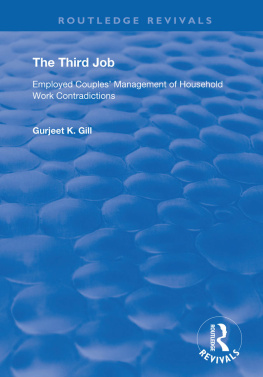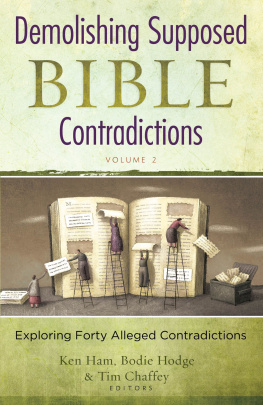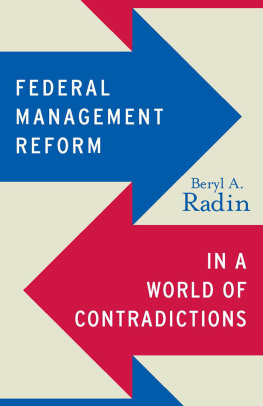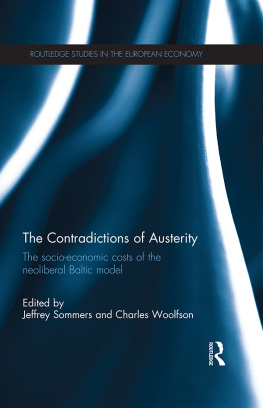THE THIRD JOB
The Third Job
Employed couples' management of household work contradictions
Gurjeet K. Gill
Department of Social Anthropology Massey University, New Zealand
First published 1998 by Ashgate Publishing
Reissued 2018 by Routledge
2 Park Square, Milton Park, Abingdon, Oxon OX14 4RN
52 Vanderbilt Avenue, New York, NY 10017
Routledge is an imprint of the Taylor & Francis Group, an informa business
Copyright Gurjeet K. Gill 1998
All rights reserved. No part of this book may be reprinted or reproduced or utilised in any form or by any electronic, mechanical, or other means, now known or hereafter invented, including photocopying and recording, or in any information storage or retrieval system, without permission in writing from the publishers.
Notice:
Product or corporate names may be trademarks or registered trademarks, and are used only for identification and explanation without intent to infringe.
Publisher's Note
The publisher has gone to great lengths to ensure the quality of this reprint but points out that some imperfections in the original copies may be apparent.
Disclaimer
The publisher has made every effort to trace copyright holders and welcomes correspondence from those they have been unable to contact.
A Library of Congress record exists under LC control number: 98071964
ISBN 13: 978-1-138-32303-2 (hbk)
ISBN 13: 978-0-429-42957-6 (ebk)
This book is about three-job (two-paid and one household work) families. It is about couples who are involved in the labour market and face the enormous task of unpaid 'third job' of managing their households. Here, the third job of 'household management' is perceived as a 'job' in its own right. At a general level, it is unpaid and gender specific and includes the performance of household work and child-care activities, decision-making, wearying, planning, negotiating and the designing of coping strategies, as well as any other activity considered important for the overall family management. However, more specifically it is conceptualised at two levels: ideological and practical. In the ideological sense it is the running of household affairs to carry out a 'normal' family life (Brennan and Moss, 1991: 2), and in the practical sense it is the performance of household work 'necessary' for the sustenance of family members. The two aspects are interlinked as they both implicate one another.
Because both partners are involved in the labour market they lack essential resources (time, energy) to do the required household work in order to manage their families. They also lack a sense of 'sharedness' towards the responsibility of household work that mainly implicates women, ideally when both partners are involved in the paid work they should share the household work This is not as simple as it seems. The backdrop (family role-relationship, gender ideology, patriarchy, socialisation) at which the division of household labour is negotiated and carried out by couples, is in contradiction with the three-job family situation. By this I mean the labour market, to which couples are contracted to, bears contradictions that mostly implicate wives and mothers. For example, within the macro institutional order (labour market) some aspects such as Equal Employment Opportunity and Affirmative Action are contradicted by a lack of child-care, patriarchy and rigid job structure. Similarly within family (micro interaction order) managing the household work requires adaptation and readjustment of household division of labour which may be in contradiction with the traditional images of husbands and wives. Consequently contradictory features within and between the labour market and the family lead to household work contradictions.
Household work contradictions are acutely experienced in the everyday life of three-job families. In order to manage household work contradictions the couples in three-job families devise household management rules as strategies and tactics. The effective or ineffective management of household work contradictions lies in the nature of household management rules. Five such rules (in ) are used to describe the process by which families (under two models: Trade-off and Rigid) manage household work contradictions either effectively or ineffectively. Families under the Trade-off Model manage household work judiciously and effectively whereas families under the Rigid Model manage household work contradictions chaotically and ineffectively.
Theoretical increment in this book is the graphical specification of the relationship of macro institutional order (labour market) and micro interaction order (family). This is done through 'loose coupling' as an attempt to overcome the macro-micro dualism by envisaging individuals and society as inseparable and indivisible.
This book acts as a window into the everyday lives of households in which employed couples struggle with the 'third job' of household work in order to keep their families together. It is about their discourse on the ways in which they handle constraints, how women as wives and mothers handle personal goals, role definitions and dilemmas, whether they negotiate ground rules or not to suit their three-job family situation, whether they manage their three-job families effectively or run into household crisis, and whether they use flexible or inflexible style to manage their households.
I am grateful to the three-job families who welcomed me into their households and gave me their time and talked freely about their households.
This book has evolved from a doctoral dissertation written under the supervision of Peter Lucich in the Department of Sociology at the University of New England, Australia. I wish to acknowledge his invaluable advice, constructive criticism and patience. My gratitude is due to Hugh Potter and Jim Bell for their helpful suggestions and their encouragement. I am grateful to Michael Bittman, Jacqueline Goodnow, Jane Hood and Betsy Wearing for providing valuable critical comments on the thesis version of this book.
I am grateful to Mary-Helen Ward for proof-reading the script promptly and patiently. My gratitude is also due to Heather Hodgetts for preparing the camera-ready copy. I couldn't have done it without her help.
I am thankful to the Department of Social Anthropology, Massey University for providing ideal environment for the production of this book.
I am fortunate to have had the support of my family, friends, and colleagues that kept my enthusiasm during the preparation of this book. I am very grateful to Celia Briar for her motivation and support. I am specially thankful to Catherine Brennan for encouraging me to publish this book.
Thanks are also due to my publisher, Ashgate, for providing the opportunity to share three-job families, experience of household management with readers.
To my children, Navraj and Preet, and to my husband, Harsharn, for their unconditional love, encouragement and forbearance, I dedicate this book.
Rapid changes in society over recent years, particularly the increasing number of families in which both partners work in the labour market, have led to changes in family structures in Australia. Women's labour force participation has been on the increase since the 1960s. In 1966 women's labour force participation rate was 30 per cent of the Australian work force (Women's Bureau, 1968: 11). It increased to 41.8 per cent in 1991 (Women's Bureau, 1991: 12) and 52.9 per cent in 1996 (Australian Bureau of Statistics, 1996b: 6-8). Similarly, married women's labour force participation has increased from 12 per cent (O'Donnell and Hall, 1988: 7) in the early 1950s to 52.5 per cent in 1996 (Australian Bureau of Statistics, 1996b). Recent changes in the labour market and equal opportunity provisions, together with the International Labour Organisation convention 156, have helped women to move into and stay in the labour market (Office for the Status of Women, 1992: 3). In conjunction with the Australian government's commitment to the International Labour Organisation convention, a policy is in place that entitles both mothers and fathers to parental leave. To further facilitate women's labour market involvement, the Office for Status of Women is committed to making structural changes in the domestic division of labour and to increasing men's contribution to housework (Bittman, 1991). These facts indicate a favourable trend in the macro institutional order that facilitates women's involvement in the economy.













